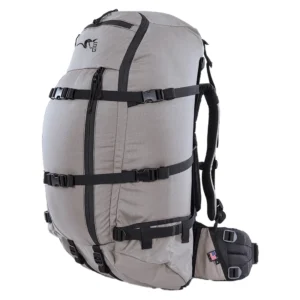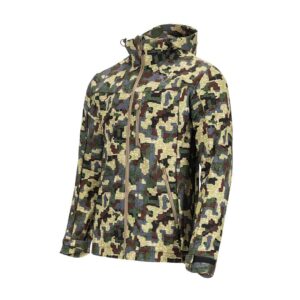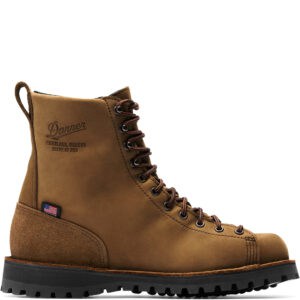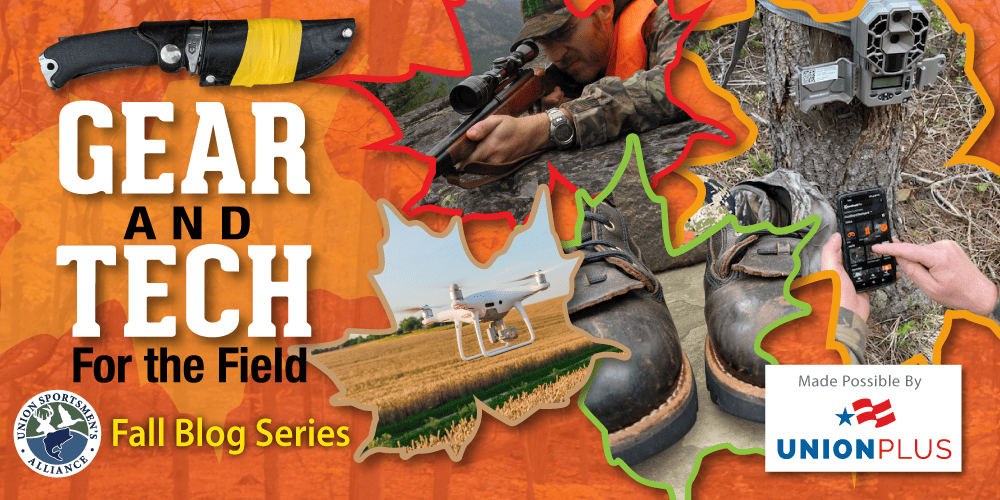Stock Up on American-made Hunting Gear
By PJ DelHomme
When you buy a hunting license, you support conservation, so why not support companies that make hunting gear right here in the USA?
Mackinaw wool. Maine Hunting Shoes. Kentucky rifle. These are all classic pieces of American-made gear designed for hunting in the good ole USA. Going back hundreds of years, they remind us of the deep roots that hunting has in our collective culture.
Over the years, gear has changed. Wool has given way to synthetic fabrics. Gore-tex and Vibram soles are integrated into boots. Those muskets were replaced with centerfire, bolt-action rifles that blast the wings off a fly at 600 yards.
The manufacturing process of hunting gear has changed, too. Many companies have moved their production overseas to take advantage of cheaper labor and production costs. Still, other companies have chosen to remain Stateside.
Stone Glacier is a company based in Bozeman, Montana, and it has experience producing gear in the U.S. and overseas. Its founder, Kurt Racicot, was a hunting guide who started building hunting packs for the backcountry sheep hunter. In his experience, those hunters need a lightweight, bombproof pack that can withstand as much weight as a hunter can carry. As the company grew, it expanded to include technical clothing, sleeping bags, and shelters. The packs and accessories are built in the U.S., while clothing, tents, and accessories are manufactured internationally.
The benefits of domestic production are many, Racicot says. For one, logistics are much simpler. Everything from shipping to communication and timing are easier because the company is physically closer to suppliers and manufacturing. “We can be on a plane and visit any of our facilities on the same day,” he says. This increases efficiencies in the timing of product development and design. Logistics, though, are only part of the story.
“At the core, producing in the U.S. with U.S. materials supports our economy by keeping all dollars and work opportunities within our borders,” Racicot emphasizes. “Secondly, in our experience, the American customer will choose a U.S.-made product over one produced overseas. There is a sense of pride in both manufacturing in the U.S. and owning U.S. manufactured goods.”
Racicot points out that there are challenges to producing products in the U.S., which include labor/factory availability and the increased labor price. “The sewing and manufacturing facility availability in the U.S. is limited since most sewing factories primarily focus on military-style products,” he says. This is an important point he brings up, and it goes back nearly a century to the Buy American Act of 1933, which gives preference to, or requires the U.S. military to purchase, American-made products. In addition, the Berry Amendment restricts the Department of Defense (DoD) from using funds to buy food, clothing, fabrics, fibers, and yarns that are not grown, reprocessed, reused, or produced in the United States. “With respect to textiles and clothing, the Berry Amendment has been critical to the viability of the textile and clothing production base in the United States,” reads an International Trade Association report.
Many U.S. companies that make hunting gear also make gear used by our U.S. military. If you’re building packs, rifle scopes, rifles, and boots, it makes sense to keep that production Stateside. But that means increased labor costs compared to factories overseas. These costs can be significant, Racicot says. “In the end, U.S. manufactured goods are going to end up at a higher price point compared to overseas options,” he says. “It is our job to make sure the quality, materials, function, and customer service for our U.S. manufactured goods outweigh the increased cost for our customers.”
Stone Glacier isn’t the only company making hunting gear at home and abroad. Some companies use the hybrid approach, while others source and make everything in the U.S. You’ll find a handful of both companies in the following descriptions.
 Stone Glacier
Stone Glacier
Stone Glacier employees design, build, and test their bombproof packs here in the U.S. To be fair, sometimes they also hunt sheep in the Canadian Rockies. Packs like their Col 4800 are designed to go into the backcountry light and come out heavy, laden with meat and gear. Many of their packs feature a “load shelf” integrated into the frame, which stays hidden when not needed and deploys to carry out big loads.
FORLOH
 With a huge selection of men’s and women’s and kid’s clothing and gear, FORLOH is a relative newcomer to the sporting world. FORLOH (For the Love of Hunting) proudly sources and makes 100 percent of its gear in the USA. After a quick tour of their site, you’ll soon realize they have a massive amount of gear for every pursuit, including fishing. From warm-weather hoodies with Insect Shield technology to repel ticks and mosquitoes to down-filled jackets built for extreme expeditions, FORLOH is worth a look.
With a huge selection of men’s and women’s and kid’s clothing and gear, FORLOH is a relative newcomer to the sporting world. FORLOH (For the Love of Hunting) proudly sources and makes 100 percent of its gear in the USA. After a quick tour of their site, you’ll soon realize they have a massive amount of gear for every pursuit, including fishing. From warm-weather hoodies with Insect Shield technology to repel ticks and mosquitoes to down-filled jackets built for extreme expeditions, FORLOH is worth a look.
Leupold
Based in Portland, Oregon, this optics outfit introduced its first rifle scope in 1947. The Plainsman scope was the first fog-free riflescope made in America. With more than 600 employees today, Leupold is still building high-quality rifle scopes adorned with their distinctive gold ring. For the price, Leupold’s line of VX-Freedom is hard to beat in both value and quality.

 Danner
Danner
Another Portland, Oregon, company, Danner, has three different levels for its made-in-the-USA boots, including a Berry-compliant version. In 1932, Charles Danner set out to build the best boots that loggers in the Pacific Northwest had ever worn. Today, the company builds boots for loggers, miners, welders, hunters, hikers, and hipsters. I’ve hunted in a pair of their Elk Hunter boots for the past four years, and they haven’t let me down.
Ruger
Several rifles are still made in the USA, but few source every component from America. That’s where the aptly named Ruger American shines. With models starting at a reasonable $600, the Ruger American has a number of features found in more expensive rifles made overseas. With seven different models and myriad calibers and configurations, the Ruger American is worth a look at your local sporting goods store.

 Bear Archery
Bear Archery
Fred Bear was a legendary bowhunter whose passion for bowhunting drove him to create a legendary bowhunting company. He started Bear Archery in 1933 in Detroit, Michigan. The company moved to Gainesville, Florida in 1978 and has continued to build longbows, compound bows, and crossbows.
This list of companies making hunting gear in the U.S. is hardly exhaustive, but it’s a start. The next time you’re in the market for some new gear, find out where that gear is produced. If it costs only a little more than the overseas option, why not buy American?
Click HERE for more U.S. Made outdoor products
PJ DelHomme writes and edits content from his home in western Montana. He runs Crazy Canyon Media and Crazy Canyon Journal.
Check Out Other Articles in This Blog Series
7 Cheap and Easy Hunting Gear Hacks – Union Sportsmen’s Alliance
Is There Too Much Tech in Hunting? – Union Sportsmen’s Alliance
Do You Need More Than One Rifle? – Union Sportsmen’s Alliance




